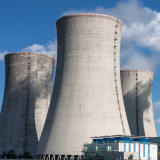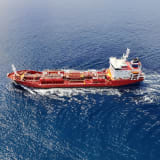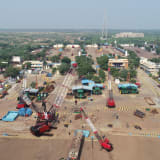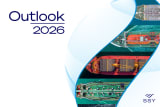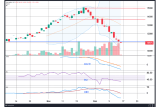Posts
20/03/24
Chemicals Update: How do Copper and Nickel Trends Impact the Chemical Tanker Market?

Although some might say it’s “too little, too late”, the green transition is well underway, and it requires massive quantities of key metals such as Copper and Nickel.
With Copper there is a growing problem. Existing mines are producing lower and lower quality Ore and new good quality Copper reserves are rare. These days, Ore with 0.5% Copper content is considered high-grade – this number was several times higher a couple of decades ago. Whilst there is a shortage of quality Copper Ore, there is a glut of smelting capacity, with China being the world’s largest refined Copper producer.
Despite the downturn in China’s property market over the past year, Copper prices have remained relatively high, supported by the demand from green tech. A recent tightening in the market caused the Copper concentrate processing fees at Chinese smelters to plunge to as low as $3 per metric ton, well below break-even levels. This prompted a concerted effort by the industry association to curb operating rates, cut production and move planned turnarounds earlier to prevent sharp losses.
Meanwhile, the Nickel market is oversupplied due to a massive new production capacity from Indonesia and a slowdown in global electric vehicles (EV) sales, which account for around 15% of the demand for the metal. As a result, Nickel prices have experienced roughly a 45% drop within the last year or so, forcing high-cost producers to shut down or cut down operating rates and prompting the start of a possible wave of consolidation.
The EV and solar panel producers, (which are some of the major end-users of Copper and Nickel), have been struggling with an oversupply of their own produce and cut-throat competition has led to ongoing price wars with multiple rounds of price slashing. A few days ago, Longi Green Energy Technology Co., the world’s largest solar manufacturer who at its peak employed 80,000 people, announced plans to cut almost one-third of its staff to slash costs in an industry where manufacturing capacity exceeds five times the solar installations.
These developments suggest demand/supply imbalances in the Copper and Nickel markets and a new equilibrium at lower levels of production. For the Chemicals market, this would mean likely lower Sulphuric Acid exports from China and North-East Asia in the short term.
This factor could remain in play for longer if Donald Trump wins the US Presidential elections in November and enforces his planned 100% import tariff rates on Chinese goods. Furthermore, a similar action may be taken by the European Union, which is currently investigating potential dumping practices from Chinese producers of solar panels and electric vehicles. Prohibitive import tariffs in the US and/or the EU would further negatively impact the demand for these products, of which China is the world’s biggest supplier.
As Sulphuric Acid shipments are an important part of the Chemical Tanker market out of Asia, a drop in the export volumes would ease the pressure on the Far East Southbound and Transpacific trade lanes in the coming months. Of course, any softening or reduction of the freight rates would be welcomed by the Charterers. Many of them have been facing challenges completing deals in February/March on the extremely tight Chemical Tanker market out of the Far East (see our chemicals update from 6 March ) and, (despite being flexible on the quantities or laycan dates), had to postpone some shipments for late April / May due to lack of affordable tonnage.
By Plamen Aleksandrov, Market Researcher, Chemicals, SSY
Articles
You may also be
interested in
View allGet in touch
Contact us today to find out how our expert team can support your business








